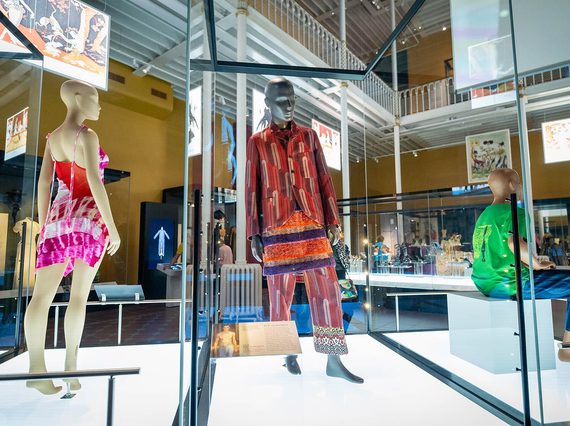
Art, Design, and Fashion galleries
Discover a treasure trove of creativity in our Art, Design, and Fashion galleries.
These beautiful galleries showcase the best of decorative art, design, fashion and style. Explore the influence of design on everyday life and see how makers continue to innovate.
Please note that these galleries span over several floors of the museum.
Galleries to visit
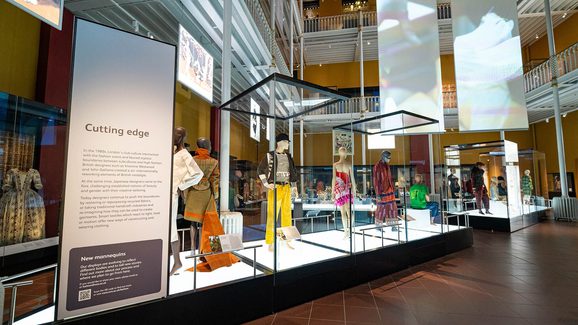
Fashion and Style
Location: Level 1
Walk your own catwalk and explore centuries of creativity and innovation in textiles and fashion.
Spot gems by Vivienne Westwood, Zandra Rhodes, Jean Muir and Pringle of Scotland and try your hand at fashion design in our digital game.

Making and Creating
Location: Level 3
Making and Creating explores the techniques and inspirations behind the work of artists, makers and designers.
Don't miss this rare artist’s proof by Picasso, designed in 1954. Worked in iridescent, black and white glass, Capra represents a small goat resting on the grass.
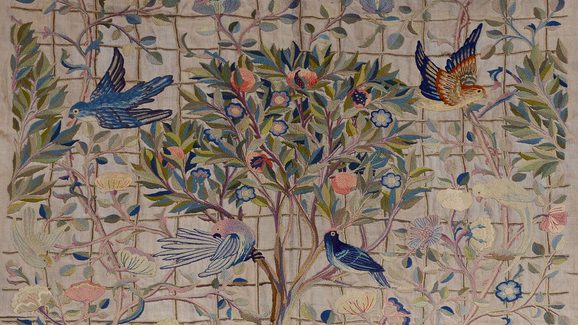
Design for Living
Location: Level 5
Wander up to Design for Living to discover ideas that shaped a century of design, from the Great Exhibition to the Festival of Britain.
Here you can get acquainted with May Morris’ intricate embroideries. Created to hang in Orkney’s Melsetter House, these wall hangings are a beautiful example of the Arts and Crafts movement.

Art of Living
Location: Level 5
Take a trip to our Art of Living gallery to see stunning examples of decorative art as expressions of beauty, taste, power and devotion.
Sup wine from the astronomical Hamilton-Rothschild Tazza and take tea with the Emperor Napoleon’s tea service.
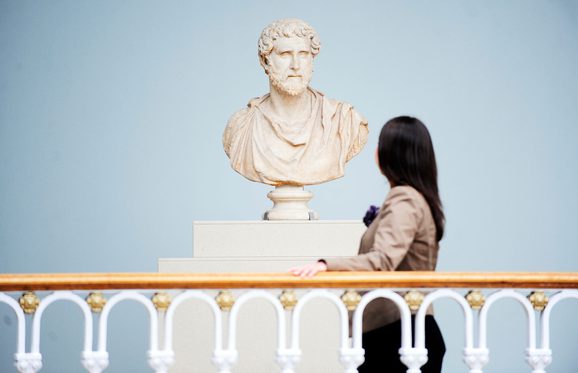
Traditions in Sculpture
Location: Level 5
From earliest times sculptors have created works intended to inspire devotion, to tell stories, to commemorate individuals or to capture beauty in a lasting form.
Traditions in Sculpture, on the balcony of Level 5, contrasts classical and Christian sculpture with those of the Hindu and Buddhist traditions.
Object highlights
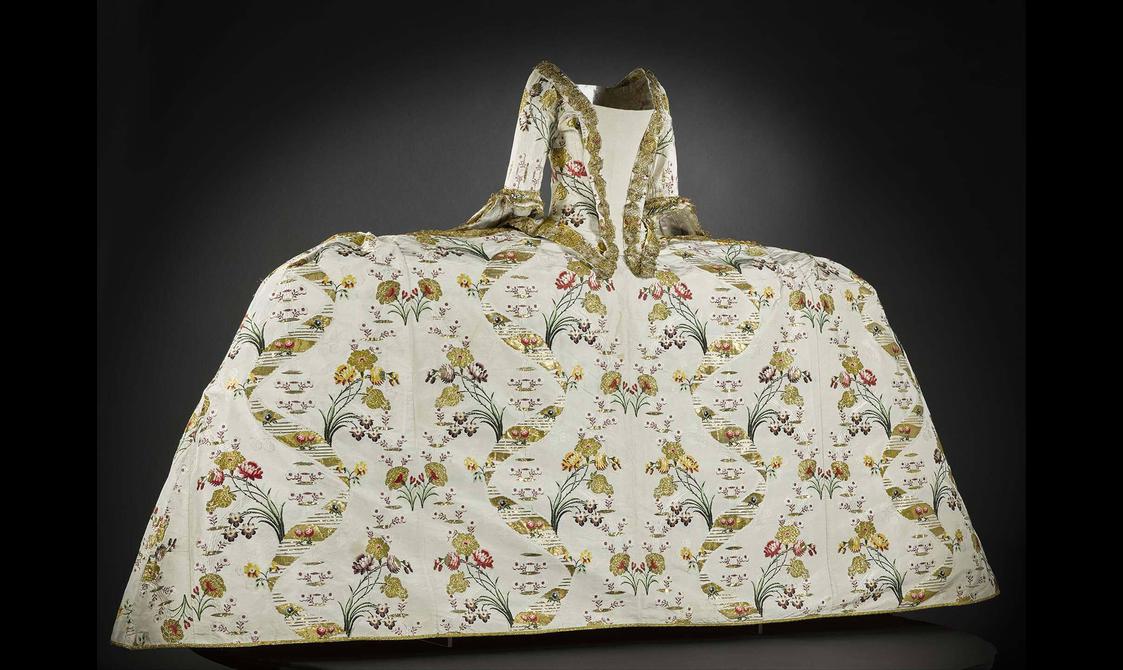
18th century court mantua. Museum reference K.2013.67.1-2.
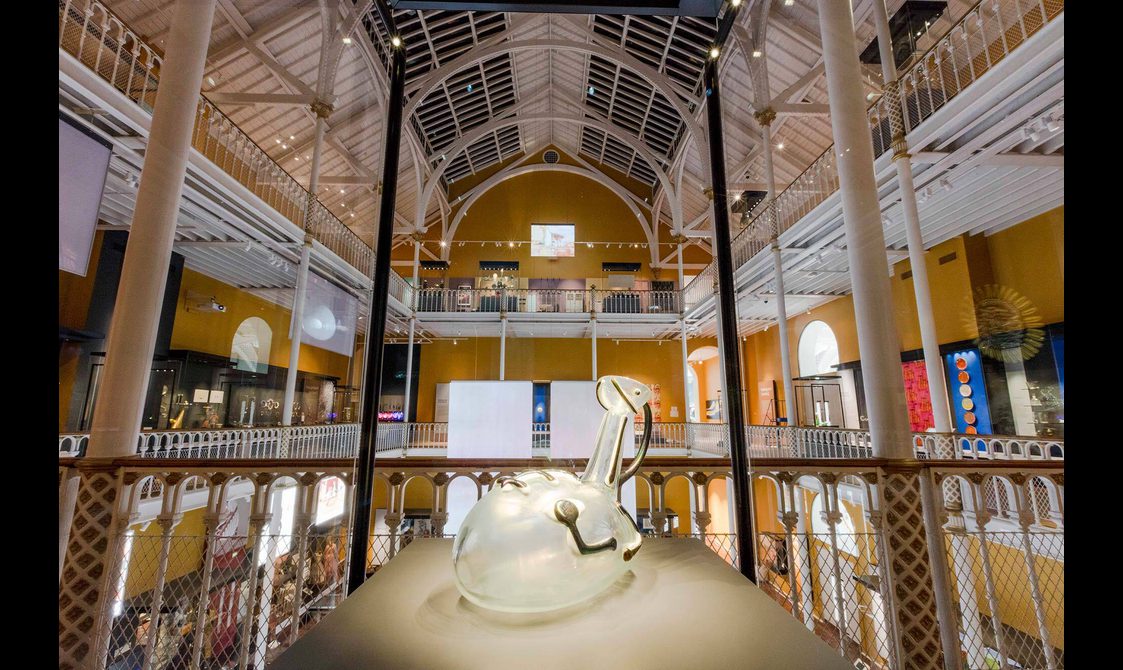

Items of the Allegro dining suite.

The Hamilton-Rothschild tazza.
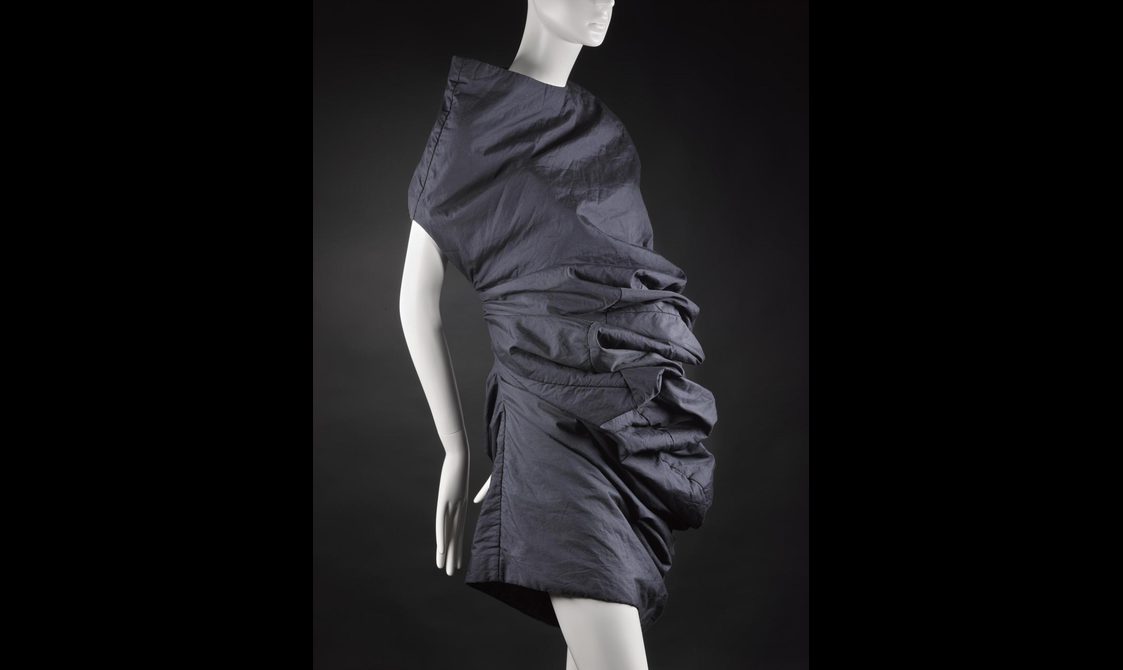
Dress from 'Body Meets Dress' or 'Bump' collection, of blue/black polyester and cotton, padded with tulle, designed by Rei Kawakubo for Comme des Garçons, Spring/Summer 1997. © Rei Kawakubo / Comme des Garcons.
Stories from the galleries
- Discover
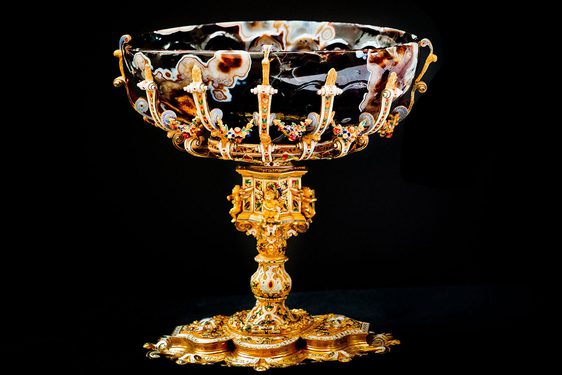
The Hamilton-Rothschild tazza: A truly unique cup
This tazza, or cup when translated from Italian, is truly a magnificent object.Created soley to impress people, the Hamilton-Rothschild tazza is a 'marriage' of two parts; an exceptionally large Byzantine bowl made from sardonyx (a variant… - Discover
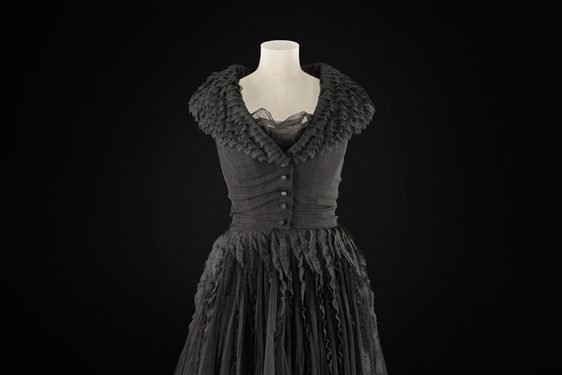
100 years of the Little Black Dress
The ‘Little Black Dress’, or ‘LBD’, first captured the fashionable imagination in the 1920s. It was radically modern and masculine-inspired, and was free from the earlier constraints on women’s dress.In 2023 National Museums Scotland… - Discover
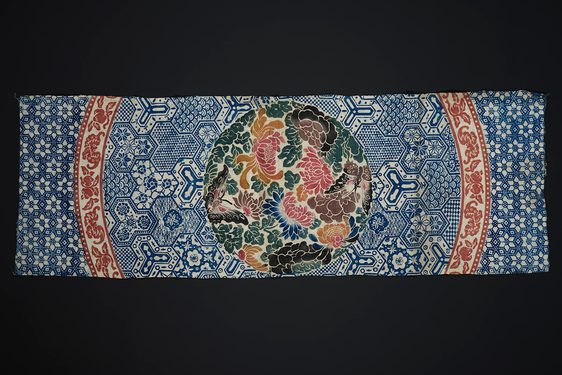
The material lives of ordinary people: rare 19th century Chinese cotton
Written by Dr Rachel SilbersteinWhen you think of historical Chinese dress, what material comes to mind? Most people would probably assume silk. But the majority of the population in Qing dynasty China (1644-1911) actually wore cotton.However, this reality is not… - Discover

The cultural symbolism of monkeys and apes in 6 objects
Apes and monkeys are the closest relatives to humans. Our primate cousins have always held special significance for the cultures mostly directly in contact with them. This selection of objects from our collections exemplifies the powerful…
Gallery accessibility
Getting to the galleries
Lifts and escalators
Lifts are available to all floors of the museum. You can check the museum map or ask a member of the Visitor Experience team for the nearest lifts. Information on lift dimensions is available on the AccessAble website.
In the galleries
Seating
There are seating options in the Art, Design, and Fashion galleries, either in the form of permanent seats or foldable chairs. Please ask a member of the Visitor Experience team for the nearest seats.
Lighting
The lighting levels are low in all of the Art, Design, and Fashion galleries.
Noise
Large screens hang from the ceiling of the Art, Design, and Fashion galleries. They play videos on loop without any audio.
Check our sensory map to explore all the different sensory experiences in different parts of the museum.
Large print guides
Large print guides can be found in every gallery of the museum. Please remember to return them after use so that other visitors can use them.
Facilities
Toilets
Accessible toilets and baby changing facilities are also available on most floors and there is a Changing Places (U) toilet in the Entrance Hall on Level 0. You can access the museum map to find those nearest to you or ask a member of the Visitor Experience team.
Cloakroom and storage
Self-service lockers are located in the Entrance Hall. The lockers come in three sizes which accommodate coats and small bags right up to small flight cases.
There is buggy storage available in the museum. It is located on Level 1 of the Scotland galleries, behind the Kingdom of the Scots gallery.
Quiet spaces
If at any time you or someone you are visiting with finds the visit overwhelming, a member of staff can direct you to quieter areas in the museum. The sensory map also identifies the quieter spaces.
Visit our accessibility page for full access information for the National Museum of Scotland buildings.
You might also like
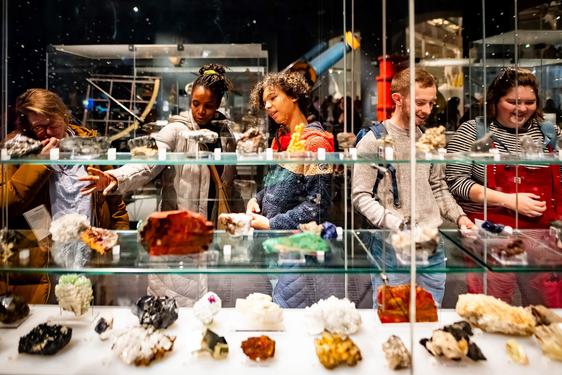
Plan your visit
Find out how to get to the museum and make the most of your visit.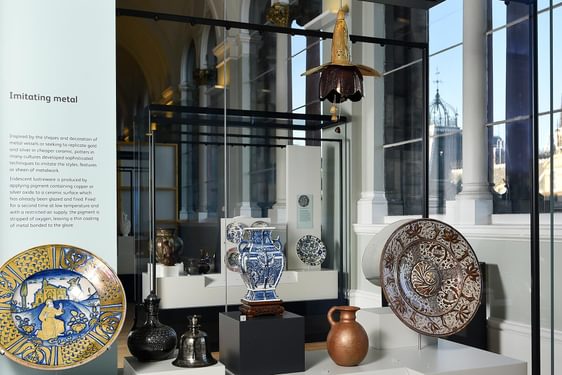
Global Arts, Cultures and Design department
Our Global Arts, Cultures and Design collections include internationally important material from across the world.
Search the collections
Our online database contains a selection of the 12 million objects and specimens in our collections.